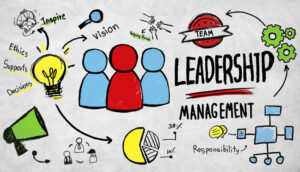As leaders we need to ensure that our teams are delivering high performance. But this is easier said than done. Angelo Azar highlights three actions that a leader in a contact centre environment can prioritise for maximum return.
The number of short courses or management training days we have all attended over the years to help define high performance and subsequently lead our teams into that ‘zone’ is probably forgotten by now. One thing is definite, the concept of high performance isn’t new to leaders and the many methods with which organisations attempt to connect their leaders to the concept aren’t new either.
High performance is subject to many different iterations and interpretations depending on an organisation’s objectives and a leader’s frame of reference. We often correlate high performance with the engagement level of our employees, the level of advocacy our customers have for us or the return on investment we provide to our organisation’s shareholders.
However, the most common feeling associated with high performance is that of contentment and satisfaction. Leaders seek to be high performing as it provides the response to our need for purpose.
Setting the framework for leadership
We have all seen the many astonishing figures which aim to captivate us to urgently seek to be high performing. It isn’t a question of whether leaders want to be high performing and lead teams of the same calibre, it is whether we are focusing our efforts on the tasks that will bring us maximum return.
Here are 3 actions that a leader in a contact centre environment can prioritise for maximum return.
1. Set simple, clear and actionable expectations
The leader’s priority in becoming high performing is to make their team aware of what is expected. Without awareness of expectations, the best-case scenario is that employees guess what they need to achieve. Being unaware of expectations is like a sprinter running without knowing which direction is the right one.
Expectations should be simple, clear and actionable. They should be simple enough so that they align to organisational objectives but are refined to the individual and small team level.
They should be clear enough so that a leader ensures every member of their team has a consistent understanding of the expectation, which removes confusion and supports the team in working together to the same goal.
The expectations should also be actionable so that each member of the team feels that they can contribute and they know exactly how they can. In the case of the sprinter, the expectation may be to ‘sprint as fast as possible with the best possible form along the first lane on the track towards the finish line’; simple, clear and actionable.
2. Provide feedback and support
Think back to your first opportunity to drive. More likely than not, we each had somebody there to explain to us how to drive our car from point A to point B, with pinpoint coaching each step of the way, arguably more coaching than many of us wanted at the time.
In retrospect, though, how successful would your first attempt at driving have been if you were expected to complete the same process without any support along the way? Much the same is true in our teams: we can set expectations, but it is our role as leaders to support their achievement.
Support comes in many shapes and sizes, including specific and relevant feedback and aligned coaching, training and development. As leaders, we should aim to equip our employees with the tools required to meet, if not exceed, expectations.
A study in 2007 by the Human Resource Institute found that only 20% of employees thought their managers were coaching regularly to help them improve their performance; a clear opportunity. Through specific and relevant feedback, leaders can help employees become more aware of their performance and provide the aligned coaching to then help reinforce positive behaviour and grow improved behaviours.
3. Consequences which reinforce expectations
From the day we are born to the day when time decides to draw the curtains, our nature as human beings remains unchanged – we behave based on the consequences our behaviour reaps.
As a child, the reward of a lollipop always reinforced that we were doing something right, and if we wanted that lollipop again, we needed to continue that behaviour.
It is much the same throughout our entire lives and with the employees we lead. Our actions as leaders will determine what behaviours we ultimately choose, either directly or indirectly, to accept or reprimand.

Simply put, behaviours that we want to see replicated must be rewarded and those that fall short of expectations must be managed appropriately.
What’s next?

Angelo Azar
Leaders can follow this simple framework to high performance by consistently defining the boundaries within which they will operate.
High performance in a highly measurable environment such as the contact centre is achievable, and setting expectations, providing support and utilising consequence to reinforce correct behaviours are a positive method of reaching that ‘zone’.
As leaders, it is our role to ensure the message makes sense and that it matters to our employees. This simple process will ensure that it does by keeping it constantly on the minds of your employees and yourself through your immersion in its successful delivery.
Angelo Azar is General Manager, Sales Customer Services, BOC South Pacific, A Member of the Linde Group.
Do you have any other tips? Please leave them
Author: Jo Robinson
Published On: 7th Dec 2011 - Last modified: 27th Oct 2020
Read more about - Hints and Tips, Employee Engagement, Motivation, Performance Management, Staffing






































